I really dig this video about how to make Pancake Zombies for Halloween or any other ghoulish occasion like birthday parties or, in my case, basically anything that has to do with cooking (I am not a fan of it). (via Maaike Hartjes)


I really dig this video about how to make Pancake Zombies for Halloween or any other ghoulish occasion like birthday parties or, in my case, basically anything that has to do with cooking (I am not a fan of it). (via Maaike Hartjes)
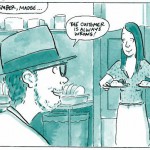
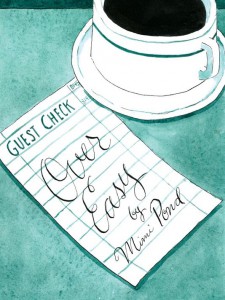 Frankly I couldn’t wait tables if my life depended on it. I am simply too clumsy to be a waiter. Thankfully, Margaret Pond isn’t. When she is denied financial aid to cover her last year of art school, Margaret gets a job as a dishwasher in the Imperial Café and soon becomes a waitress.
Frankly I couldn’t wait tables if my life depended on it. I am simply too clumsy to be a waiter. Thankfully, Margaret Pond isn’t. When she is denied financial aid to cover her last year of art school, Margaret gets a job as a dishwasher in the Imperial Café and soon becomes a waitress.
Over Easy is Mimi Pond’s freewheeling graphic memoir about her life and times at Mama’s Royal Café in Oakland, California, in the late seventies. An era in which the sensitivities of the hippie movement faded away and were replaced by Punk’s angry outlook on life. It’s also the era in which the staff of the Imperial Cafe, besides having a coffee and a fag, take a recreational sniff of coke on their lunch breaks.
Pond is a cartoonist, illustrator and writer. She has created comics for different publications including the Los Angeles Times. Television credits include the first full-length episode of The Simpsons, and episodes for the shows Designing Women and Pee-Wee’s Playhouse.
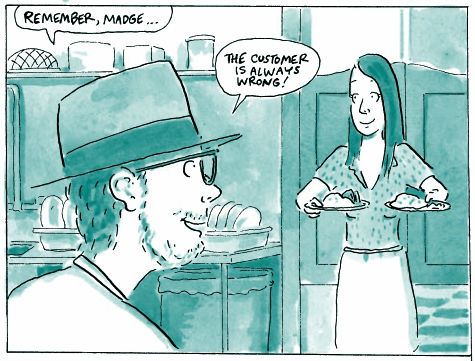
On the menu we have an interesting collection of colourful characters, Margaret’s colleagues. There is the friendly Lazlo Merengue who runs the place – if you apply for a job and tell a joke he likes, you are hired. There is Sammy the cook and wanna-be poet, who marries one of the waitresses on a whim while they’re spending a drunk weekend in Reno. And then there are the lovely waitresses, each with their own outspoken personality. They all imagine themselves to be the stars of the little dramatic theatre that is the Imperial Café. All the regulars and the staff have pseudonyms and Margaret is christened Madge.
The book is filled with well-written observations, and I especially liked the way Mimi portrayed the characters. Her voice-over is very witty and light of tone. For instance, this is how she describes Helen, one of the waitresses: ‘Helen is tall, and without being what you’d call classically beautiful, manages to pull off this punk Lauren Bacall thing that drives men wild. She has deadpan delivery, and she hardly ever smiles. But when she does, all men become her slaves. And if you make her laugh, well, the clouds part, the sun comes out, life looks great again. I am determined to learn her secrets.’
The Imperial Café community seems to be as without direction as the plot of the book, which moves along at a slow, free-wheeling pace. The story climaxes at a poetry night on Halloween, if one could call it a climax. Actually the book is pretty much open-ended and on the last page the story seems to be far from finished. Let’s hope Pond will have a sequel finished soon.
This review was published on the lovely blog of the American Book Center.
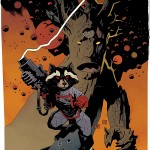
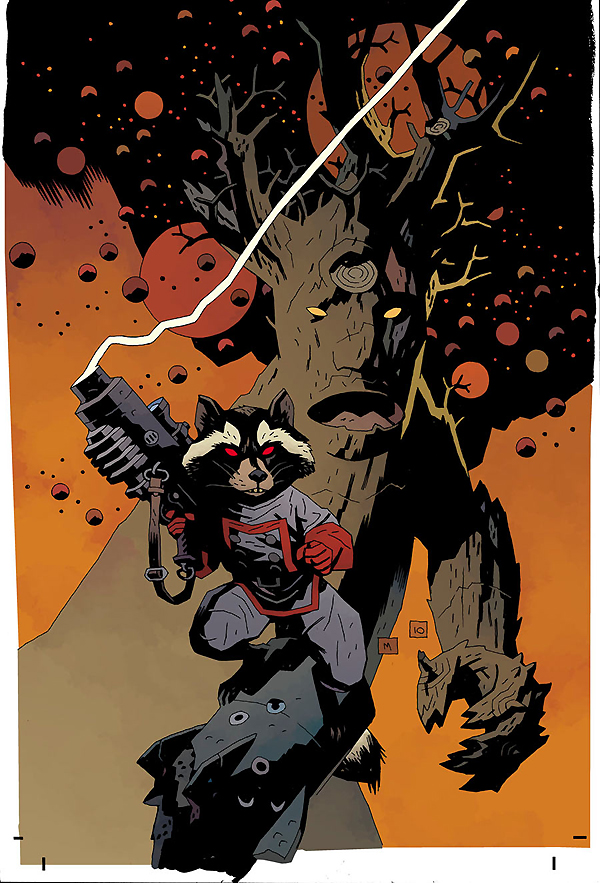
After reading the Rocket Raccoon and Groot trade paperback, I can’t help wondering what writer Bill Mantlo and artist Keith Giffen were smoking when they conjured up the character. No doubt they were listening to The White Album by The Beatles, because the first real story in which Raccoon plays an important part, which happens to be an adventure with the Incredible Hulk, is full of references to the song ‘Rocky Raccoon’.
Rocket Raccoon is an intelligent, anthropomorphic raccoon, an expert marksman, master tactician and pilot. He’s also an inhabitant of a planet called Halfworld. Half of this planet consists of an insane asylum called Cuckoo’s Nest, which looks as cosy as the garden of Eden, while the other half is an industrial wasteland where robots are producing toys to keep the insane entertained and happy. It’s Rocket’s task to protect the inmates from killer clowns and the Black Bunny Brigade, and guard the loonies’ ‘Gideon’s Bible’, which contains everything one needs to know about the history of the planet – if only one would be able to decipher its text.
If this sounds a bit corny or loony, you’re quite right. Strangely enough I never had trouble believing stories about a guy bitten by a radioactive spider, nor about a Bat-Man guarding a major metropolis. However, it took me quite some pages to get into the groove of the nonsensical world of talking animals, with the likes of Rocket Raccoon and his side-kick Wal Rus, who has mechanical tusks that can blow your head off.
However, things start to get quite serious in the four-issue limited series by writer Bill Mantlo which is also a part of this trade paperback, when the two major toy providers, a mole and a big snake, start a trade war with one another. When Rocket’s girlfriend, a lovely beaver named Lylla, gets kidnapped in the process, it is up to him and his team to free her. They’ll change the fate of Halfworld in the process.
The fact that a young Mike Mignola, who later became famous for creating a certain character called Hellboy, drew these four issues of Rocket Raccoon made the story that more interesting to me, especially since you can clearly see Mignola still trying to find his typical expressionistic style. (The cover of the book is, however, drawn in that lovely Mignola style we all love so much; see picture above right.)
Oh yeah, even though Groot is not as important a character as the title of the book might make him appear, let me tell you a bit about him. Groot (also known as the Monarch of Planet X) was created by Jack Kirby, Stan Lee, and Dick Ayers. The character first appeared in Tales to Astonish #13 (November 1960), which is also contained within this trade. He’s an extraterrestrial, sentient, tree-like creature that originally appeared as an invader who intended to capture humans for experimentation. Later on, he was reconfigured to be a heroic noble being, and crossed paths with Raccoon.
Nowadays Rocket Raccoon and Groot are members of the Guardians of the Galaxy, and will star in the summer blockbuster by the same name. In the four part story ‘Annihilators’ Raccoon and Groot take centre stage. Personally I enjoyed this adventure written by Dan Abnett and Andy Lanning and drawn by Timothy Green II, the best. The story starts with the Guardians of the Galaxy disbanded, and Rocket working as a mailboy at the offices of Timely Inc. (Note that Marvel Comics used to be called Timely Comics.) He doesn’t remember a lot about his past, but when Rocket is attacked by a killer clown, it is time to visit his old buddy Groot once more and travel back to Halfworld to discover why Rocket had to leave his place of birth in the first place. It is a fun read, event though this adventure sort of rewrites the events of the four-part story of Mantlo and Mignola that came before.
I loved certain running gags in ‘Annihilators’. For instance, to the untrained ear Groot’s vocabulary seems quite limited, for all he seems to yell is ‘I am Groot!’, but that’s just because you and I don’t speak tree. Rocket does, however, and luckily for us his responses to Groot make clear what his wooden ally is talking about during the comic.
This review was written for and published on the blog of the American Book Center.
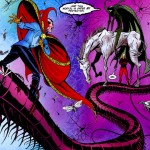
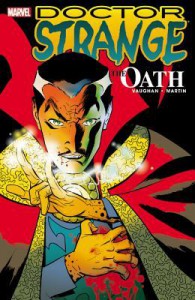 I know, all of the above sounds a bit corny. Frankly, until recently I wouldn’t call myself a Doctor Strange-fan. Since Strange is one of the residents of the Marvel Universe, he frequently guess-starred in comics I read, be it Amazing Spider-Man, The Fantastic Four or Avengers. However, the fair Doctor did make an impression in those stories, and maybe that’s why I picked up a big pile of Doctor Strange-comics when I came across them in a sale at a local comic book store last year. After reading a couple of these comics from the late eighties, early nineties, written by Roy and Dann Thomas, I was hooked on the wonderful mystical world in which Strange operates. I also grew fond of his interesting and weird supporting cast: his apprentice is a green alien bull and his brother a vampire, to name just two oddities that stand out. Also it seems that the mage has become quite a nice guy and seems a total different person from the selfish surgeon he once was.
I know, all of the above sounds a bit corny. Frankly, until recently I wouldn’t call myself a Doctor Strange-fan. Since Strange is one of the residents of the Marvel Universe, he frequently guess-starred in comics I read, be it Amazing Spider-Man, The Fantastic Four or Avengers. However, the fair Doctor did make an impression in those stories, and maybe that’s why I picked up a big pile of Doctor Strange-comics when I came across them in a sale at a local comic book store last year. After reading a couple of these comics from the late eighties, early nineties, written by Roy and Dann Thomas, I was hooked on the wonderful mystical world in which Strange operates. I also grew fond of his interesting and weird supporting cast: his apprentice is a green alien bull and his brother a vampire, to name just two oddities that stand out. Also it seems that the mage has become quite a nice guy and seems a total different person from the selfish surgeon he once was.
Currently the good doctor doesn’t have a series of his own, but every once in a while Marvel Comics publishes a limited series, like The Oath: a five-part story that got collected in one volume in 2013. The Oath is written by Brian K. Vaughan, best known for intelligent and entertaining series like Y: The Last Man, Ex Machina and Saga. The artwork is by Marcos Martín, who uses a wonderful personal style that looks a bit retro while still feeling contemporary.
In The Oath, Doctor Strange’s servant Wong is suffering from a brain tumor. Medical science may be unable to treat it, but the master of the mystique knows of an elixir, which is kept in a deadly dimension, that might cure his good friend. After fighting a monstrous entity that guards the elixir and returning home, they soon discover that there is more to this elixir than meets the eye. When a burglar is hired by a big pharmaceutical company to steal it from Strange’s house, the Sorcerer Supreme gets shot during the robbery.
Vaughan treats the reader to an interesting and fast-paced story that has a couple of unexpected twists and turns, and ties Doctor Strange’s past to current affairs. He also manages to put forward an ethical dilemma within the relatively limited confines of the superhero comic book, which makes it even more interesting.
Two things bothered me a little bit, though: knowing Strange from the stories by Roy Thomas, Vaughan’s characterisation of Strange seems a bit off when he lets the doctor curse and swear. I am not against swearing in general and in the past I have heard the mage exclaim stuff like: ‘By the hoary hosts of hoggoth!’. But hearing mundane curse words coming out of the mouth of Stephen Strange seems a bit out of character. Another thing that bothered me is this: in the past there were stories in which Strange’s hands were cured and he could operate again. In The Oath the fact that Stephen’s nerve endings aren’t fixed is an important part of the story. This could be an error in continuity, but since it is not clearly stated when The Oath takes place within Doctor Strange’s history and it therefore could be a tale from the early days before his hands got fixed, I am willing to turn a blind eye.
Since I probably sounded like a total continuity nerd just now, I will stop rambling, and leave you with the recommendation that The Oath is a pretty good start if you want to get to know the wonderfully groovy world of Doctor Strange.
This review was published on the wonderful blog of the American Book Center.
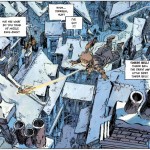
First of all, Loisel’s graphic novel is not a mere adaptation of J. M. Barrie Peter and Wendy, the classic story that has been adapted numerous times and itself was Barrie’s adaptation of his own stage play Peter Pan, or The Boy Who Wouldn’t Grow Up. Loisel has made a sequel to Barrie’s novel in which he relates the origin story of the beloved Peter Pan character. Readers who are only familiar with the Disney incarnation are in for a surprise, because this is a dark and brooding tale aimed at adults, not kids. Loisel shows us how a young lower-class kid named Peter came to be Peter Pan, how the Pirate Captain became Captain Hook and how even seemingly lovely fantasy lands can have terrible secrets.
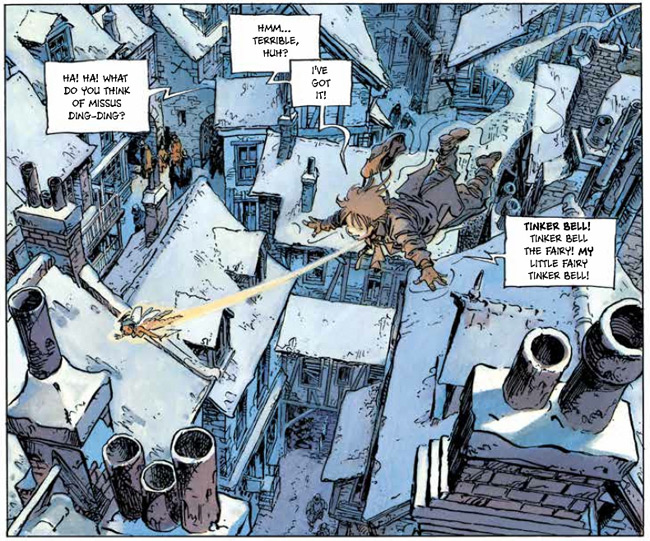 London, Winter 1887. Peter is a young boy who entertains his friends with stories and fantasies. Because all his friends live in an orphanage, one particular popular subject is Peter’s mum. They like to hear about how loving she is and how much she likes to take care of her little boy, which is as far from the truth as possible: Peter’s mum is an alcoholic who hates Peter’s guts. His only adult friend is Mister Kundal, the proprietor of a bar who feeds Peter food and stories. The world Peter lives in is very unfriendly to kids and all adults seem to be lowlifes craving booze and sex. It’s like Dickens with raging hormones. Peter basically hates all adults, except Mr. Kundal, and despises the sexualised Victorian London he lives in so much that he vows to never grow up and become a ‘dirty’ adult. When Peter’s mum has kicked him out of the house, he spends the night at the docks. Then a fairy appears whom Peter names Tinker Bell. She lets Peter fly through the air and takes him with her to Neverland, where fantastical creatures of all sorts welcome him as their savior from the dreaded Pirates that try to steal their treasure.
London, Winter 1887. Peter is a young boy who entertains his friends with stories and fantasies. Because all his friends live in an orphanage, one particular popular subject is Peter’s mum. They like to hear about how loving she is and how much she likes to take care of her little boy, which is as far from the truth as possible: Peter’s mum is an alcoholic who hates Peter’s guts. His only adult friend is Mister Kundal, the proprietor of a bar who feeds Peter food and stories. The world Peter lives in is very unfriendly to kids and all adults seem to be lowlifes craving booze and sex. It’s like Dickens with raging hormones. Peter basically hates all adults, except Mr. Kundal, and despises the sexualised Victorian London he lives in so much that he vows to never grow up and become a ‘dirty’ adult. When Peter’s mum has kicked him out of the house, he spends the night at the docks. Then a fairy appears whom Peter names Tinker Bell. She lets Peter fly through the air and takes him with her to Neverland, where fantastical creatures of all sorts welcome him as their savior from the dreaded Pirates that try to steal their treasure.
Peter, being the product of his times and upbringing, is quite the foulmouthed misogynist, calling Tinker Bell a slut at times, but basically is as stubborn and egotistical as every kid his age. On a side note: as if Pete’s world wasn’t dark enough, somehow Loisel ties Pan’s origin to the legend of Jack the Ripper as well. So yes, this Peter Pan-story is a bit on the dark side, but still Loisel offers a delightful adventure with well-rounded characters.
That’s all I want to say about the set up of the story, actually, because this comic’s wonders are best discovered by the readers themselves. Just prepare yourself for a wild, interesting and at times violent ride. The artwork by fantasy veteran Loisel looks stunning and lively; Tinker Bell has never looked so sexy. But be careful with this feisty little fairy, because she gets quite jealous and can be ruthless.
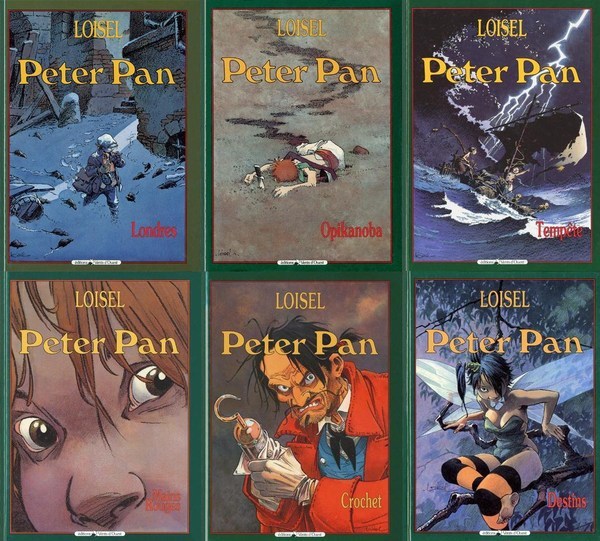
Peter Pan was originally published in France in six volumes between 1990 and 2005. Last year Soaring Penguin Press published the first English translation including all six albums in one big, high quality omnibus. I am surprised it has taken so long for an English version of this book to appear, but better late than Never(land), I’d say.
This review was published on the wonderful blog of the American Book Center.
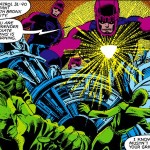
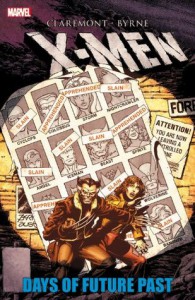 Days of Future Past was originally published in The Uncanny X-Men #141 and #142 in 1981. The storyline alternates between the (then) present year of 1980 and 2013, at the time a date far into the future. 2013 is a dystopian future in which mutants are incarcerated in internment camps. A lot of the X-Men have lost their lives fighting the Sentinels: enormous robots that have the North American continent under complete control. Originally activated by the American government to eliminate the mutant menace, the Sentinels hunted not only mutants but all superheroes and villains. Now the rest of the world threatens war against the Sentinels, which could mean a nuclear holocaust and the end of the world all together. An adult Kate Pryde transfers her mind into her younger self, the present-day Kitty Pryde, who tries to convince the X-Men to help her prevent a fatal moment in history that triggers anti-mutant hysteria and will lead up to the dystopian future of 2013. Rachel Summers, who played a major role in X-Men: Ghosts, plays a small but instrumental part in this adventure.
Days of Future Past was originally published in The Uncanny X-Men #141 and #142 in 1981. The storyline alternates between the (then) present year of 1980 and 2013, at the time a date far into the future. 2013 is a dystopian future in which mutants are incarcerated in internment camps. A lot of the X-Men have lost their lives fighting the Sentinels: enormous robots that have the North American continent under complete control. Originally activated by the American government to eliminate the mutant menace, the Sentinels hunted not only mutants but all superheroes and villains. Now the rest of the world threatens war against the Sentinels, which could mean a nuclear holocaust and the end of the world all together. An adult Kate Pryde transfers her mind into her younger self, the present-day Kitty Pryde, who tries to convince the X-Men to help her prevent a fatal moment in history that triggers anti-mutant hysteria and will lead up to the dystopian future of 2013. Rachel Summers, who played a major role in X-Men: Ghosts, plays a small but instrumental part in this adventure.
It was great revisiting this classic and well-written storyline from the early eighties. Especially since Canadian comic book artist John Byrne was the artist to bring Claremont’s scripts to life at the time. Later on Byrne would write and draw highly regarded stories about The Fantastic Four and revitalise the Man of Steel. At this juncture in his career he and Claremont worked on The Uncanny X-Men, then one of the most if not most popular superhero comic book. Soon the team split because of creative differences: Byrne didn’t like Claremont’s characterisations of the characters. In Days of Future Past however, none of the animosity is noticeable.
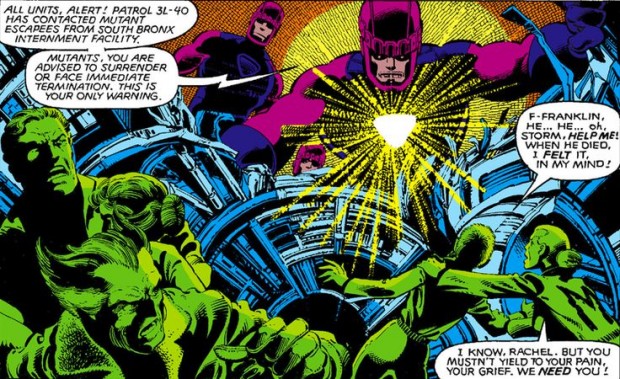
Another treat when it comes to reading old comics is to see the fashions of the time, be it in the decors or the way people dress.
The story is collected in a trade paperback containing Uncanny X-Men 138-143 and X-Men annual #4 which is illustrated by John Romita Jr. The collection starts with the funeral of Jean Grey, moving on to an interesting story of the X-Men and Doctor Strange being trapped in a dimension quite similar to hell. Then Wolverine and Nightcrawler team up with Canadian superhero team Alpha Flight to capture the Wendigo, and… Well, why spoil all the storylines in advance? Needless to say: this trade is a must-read if you like the X-Men and want to see how the movie differs from the original comic, which it does quite a lot judging by the movie trailer, which shows it is Wolverine and not Pryde who tries to save the future by travelling to the past.
This review was written for and published on the blog of the American Book Center.
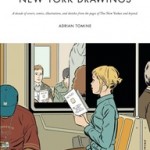
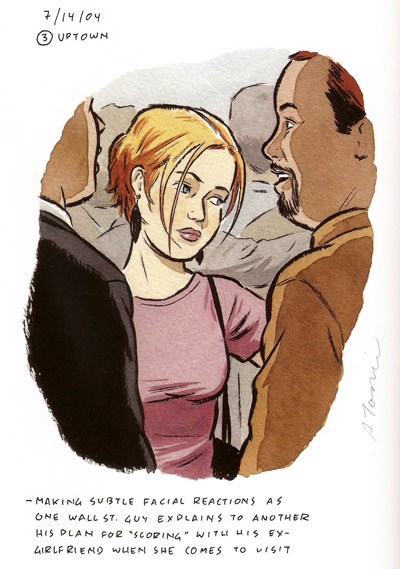 That’s the question I asked myself when a sketch of a young woman standing in a crowded subway carriage caught my eye. She is framed by two Wall Street guys and can’t help overhearing one of them explaining his plan for scoring with his ex-girlfriend when she comes to visit, but I only know this last bit because the notes under the sketch tell me so. Just looking at the woman’s contemplating face, she could be thinking about anything, her mind floating somewhere far away from her mundane surroundings. It’s a striking portrait of a very attractive woman whose beauty has a natural girl-next-door quality. And with that last sentence I guess I just answered my own question. Yes, one can fall in love with a girl in a drawing, especially when the artist conveys some of her aura and at the same time leaves enough to one’s imagination to fill in the blanks with one’s own romantic musings.
That’s the question I asked myself when a sketch of a young woman standing in a crowded subway carriage caught my eye. She is framed by two Wall Street guys and can’t help overhearing one of them explaining his plan for scoring with his ex-girlfriend when she comes to visit, but I only know this last bit because the notes under the sketch tell me so. Just looking at the woman’s contemplating face, she could be thinking about anything, her mind floating somewhere far away from her mundane surroundings. It’s a striking portrait of a very attractive woman whose beauty has a natural girl-next-door quality. And with that last sentence I guess I just answered my own question. Yes, one can fall in love with a girl in a drawing, especially when the artist conveys some of her aura and at the same time leaves enough to one’s imagination to fill in the blanks with one’s own romantic musings.
The portrait is printed in New York Drawings, a wonderful collection of Adrian Tomine’s illustrations, covers and comics for The New Yorker magazine, and other illustrations inspired by the Big Apple, such as album covers, book jackets and sketches. Comic book artist and illustrator Tomine (Sacramento, 1974) moved from California to New York in 2004. He acquainted himself with his unfamiliar surroundings by compulsively drawing the people around him. ‘I started doing a lot of very quick, observational drawing in sketchbooks. I think I was looking for a reprieve from the rigid drawing style of the book I was working on at the time [Shortcomings], and I was also just spending a lot of time exploring the city on my own, and sketching was a way for me to still feel somewhat productive in the process,’ Tomine explains in the book.
The illustrations are accompanied by the original publication date. Their titles are derived from the original article with which they originally paired in The New Yorker. The notes at the back of the book explain the image’s background, but I prefer to read the illustrations without them, so I can make up my own story about what the image conveys.
Tomine’s art and especially his clean-line style look similar to the likes of Daniel Clowes and Chris Ware. In an interview with The Comics Journal #205 Tomine mentioned Clowes and Jaime Hernandez as being major influences on his work. Although I love the stillness of his illustration-work, I have a slight preference towards Tomine’s sketches, which naturally have more spontaneous line-work and lively hand colouring, as opposed to the Photoshop-like colouring of the commissioned illustrations.
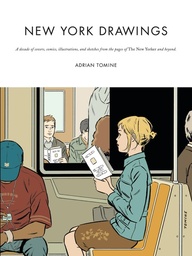 Funnily enough, the book opens with a comic strip about Tomine’s first Christmas party hosted by The New Yorker. Typically for his comic book persona the artist presents himself as an introverted, somewhat neurotic newcomer, feeling out of place at the high-class party attended by celebrities such as Steve Martin and Philip Roth. Trying to find a comfortable pose he asks random people where he can find a coat rack while he treats the reader to a neurotic internal dialogue, not deprived of self-mockery I might add, explaining how he got to work for The New Yorker in the first place.
Funnily enough, the book opens with a comic strip about Tomine’s first Christmas party hosted by The New Yorker. Typically for his comic book persona the artist presents himself as an introverted, somewhat neurotic newcomer, feeling out of place at the high-class party attended by celebrities such as Steve Martin and Philip Roth. Trying to find a comfortable pose he asks random people where he can find a coat rack while he treats the reader to a neurotic internal dialogue, not deprived of self-mockery I might add, explaining how he got to work for The New Yorker in the first place.
New York Drawings is an interesting way to see one of the greatest cities on earth through the eyes of a well-accomplished draughtsman.
This review was published on the wonderful blog of the American Book Center.
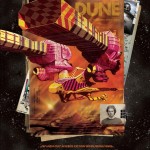
I interviewed director Frank Pavich about his documentary at the Imagine Film Festival in Amsterdam, where it won the Silver Scream Audience Award 2014.
This video is also published on SchokkendNieuws.nl.

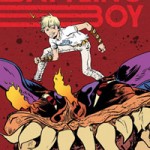
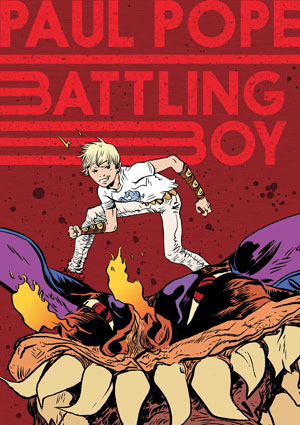 Even though in the past superhero comics were mainly aimed at kids, there weren’t a lot of child characters that were superheroes. Sometimes kids, or shall I say teens, were sidekicks, like Batman’s Robin. When the Amazing Spider-Man was introduced in 1962, it was the first time a teenager became the hero. And what a smash success it was, and to this day, still is. Since then, teenage superheroes are a lot more common. DC Comics has The Teen Titans for instance, and Marvel The New Mutants and Power Pack, which is a team that consists only of kids. Now American comic book writer/artist Paul Pope (THB, Batman: Year One Hundred) brings us Battling Boy.
Even though in the past superhero comics were mainly aimed at kids, there weren’t a lot of child characters that were superheroes. Sometimes kids, or shall I say teens, were sidekicks, like Batman’s Robin. When the Amazing Spider-Man was introduced in 1962, it was the first time a teenager became the hero. And what a smash success it was, and to this day, still is. Since then, teenage superheroes are a lot more common. DC Comics has The Teen Titans for instance, and Marvel The New Mutants and Power Pack, which is a team that consists only of kids. Now American comic book writer/artist Paul Pope (THB, Batman: Year One Hundred) brings us Battling Boy.
The city of Arcopolis is ruled by fear: monsters roam the city streets and a gang of terrorists, lead by a ghoul named Sadisto, is kidnapping children. When the city champion Haggard West is killed, his sidekick daughter Aurora tries to step into West’s footsteps. Unknown to her, the demigod Battling Boy is sent to Earth by his parents on the eve of 13th birthday. It’s time for the boy’s ‘rambling’: in their culture, the rite of passage into adulthood consists a trial which teen boys must undergo. For Battling Boy this means it is up to him to fight the monsters and make Arcopolis a safe place again. Twelve enchanted T-shirts that imbue him with the powers of animal totems, a special cloak and an invisible credit card are the boy’s tools in accomplishing this immense task or die trying.
With Battling Boy, Pope specifically aims for a young audience. In an interview with BleedingCool.com he said the following about that particular choice:
‘It’s not that I don’t think modern comics aren’t accessible to kids, they can be. I just wanted to do something which has all of the cool stuff I remember loving from Silver Age comics and Heavy Metal. I wanted to do a story which had that, but the story is accessible for young readers as well. We all know many modern comics are aimed at readers who started in the Silver and Bronze Age. Guys my age at least (I am 43). I want to make material which will get new readers hooked on comics for life. Many of the kids I am meeting at seeing Battling Boy and I can tell it is their first comic book. That’s cool, it’s assuring future readers.’
Because Pope aims at teenagers, it is not surprising that most adult characters in this book – except the heroic Haggard West and Battling Boy’s parents – are either sleazy politicians like the major of Arcopolis, helpless parents whose kids get kidnapped or baddies who do the kidnapping. The mayor of the city tries to score points with his constituency by organising a big parade to introduce the new hero as ‘Arco-Lad’, who he the tries to use as a stooge. Here Pope shows his mistrust of institutions, bureaucrats and button-pushers, also seen in earlier work like Batman: Year One Hundred and The Ballad of Doctor Richardson. In Battling Boy he translates this theme into a worldview that must appeal to adolescents who by nature rebel against their elders. For Battling Boy it seems safer to mistrust adults all together, since none of them seem to be reliable partners. Let’s hope Aurora is able to give the lad a hand since Boy’s first fights with evil are anything but flawless.
Pope seems to know the hero’s journey as written by American mythologist Joseph Campbell by heart and clearly used it as a structural reference while composing the comic. He also refers to Silver Age comic books and Jack Kirby-style characters such as Battling Boy’s father, who seems to be a nod at Marvel comics’s mighty Thor. (On a funny note: this guy never takes off his helmet.)
I thought the people of Arcopolis were actually quite passive and seemed to be in a constant need of saving. This set-up might be a great stage for a kid superhero, but seems a bit too contrived for my taste. The story raises a couple of questions, like where do the monsters and ghouls come from, but Pope doesn’t address these in this first instalment of Battling Boy. Since this volume is only part one of a series, and not a completed story, I suspect answers will be given in future chapters. Be advised that after reading some 200 pages, a cliffhanger is waiting, leaving you wanting more.
Besides these minor points, Battling Boy is an entertaining, accessible, fast-paced coming-of-age story disguised as a superhero yarn dipped in some magic sauce, and actually quite entertaining for adults as well as kids.
This review was published on the blog of the American Book Center.
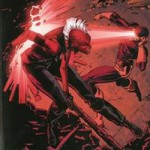
When I was in my teens I visited my grandmother on a regular basis. When she poured tea in one of those fragile porcelain cups, she’d start talking about the developments in the soap operas she followed. My grandmother was an avid watcher of The Bold and the Beautiful, As the World Turns and Days of Our Lives. So, you understand, she had A LOT to tell me about who dated whom, who wanted to kill whom, and which characters fell in love with each other this week. To be honest: I didn’t know what the hell she was talking about, since I never watched those shows. But to humour her, I never let on I didn’t know who Rich Forrester was.
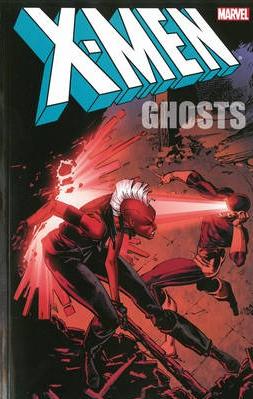 Now, why am I bringing my late grandmother and her daily television fetishes up? When I started reading X-Men: Ghosts, knowing I had to review this book for the ABC blog, I started to worry I might come across like my grandmother, because not only do these X-Men stories involve large casts of characters, writer Chris Claremont has a knack for weaving many threads of plotlines into his stories. He basically writes soap operas about characters wearing longer underwear.
Now, why am I bringing my late grandmother and her daily television fetishes up? When I started reading X-Men: Ghosts, knowing I had to review this book for the ABC blog, I started to worry I might come across like my grandmother, because not only do these X-Men stories involve large casts of characters, writer Chris Claremont has a knack for weaving many threads of plotlines into his stories. He basically writes soap operas about characters wearing longer underwear.
But let’s give it a try nonetheless. What the heck, there are worse things than being compared to my grandmother, who was a sweet old woman.
The X-Men were created in the 1960’s by Stan Lee and Jack Kirby. Getting tired of figuring out scientific experiments and accidents with radiation that could give superheroes their special powers, Lee figured: what if they were born with their powers and these special abilities kick in when they reach puberty. So that’s how the race of homo superior, a.k.a. mutants, was born.
In their first incarnation The X-Men were super powered teenagers who were enrolled at the private school of Professor Charles Xavier, a wheelchair-bound psychic. Under his leadership The X-Men tried to save humanity from all kinds of danger, especially mutants who wanted to conquer the world to make it a safer place for their own kind. You see, regular people are often afraid of these specially-powered beings, which make the X-Men stories full of metaphors about racism and the state of society as is.
To be honest, the X-Men weren’t a big success at the time and after a couple of years Marvel only reprinted old stories for a while. In 1975 Marvel published Giant Size X-Men #1 by writer Len Wein and artist David Cockrum and that started a revitalisation of the title. The new team had an international flavour: members came from all over the globe and they weren’t mere teenagers anymore either. When Chris Claremont took over the reigns as author, the X-Men became one of the most popular comic books. For a long period of time the series was the best-selling title, topping other Marvel publications such as Amazing Spider-Man and Avengers. X-Men: Ghosts collects a year worth of comics of Claremont’s mid-eighties stories. Claremont’s run on the title lasted about 16 years (!) by the way. It isn’t very common that a writer sticks to one title that long in the comics industry.
People who have seen the X-Men-movies will be familiar with most of the characters: there’s Wolverine, Cyclops, Storm, Colossus, Kitty Pryde and Rogue in this version of the X-Men. That’s not really surprising though, since the filmmakers took a lot of their story ideas from Claremont’s stories.
Still, when one starts to read, it takes a while to get into the different storylines that were set out before. But don’t worry: the short synopsis at the beginning of the book helps a bit. Besides, just like a real soap, it only takes a short while before you’re right into the action and know who’s who. Comics have a serial form of storytelling, with issues coming out each month. The stories are always written in a way that accommodates new readers.
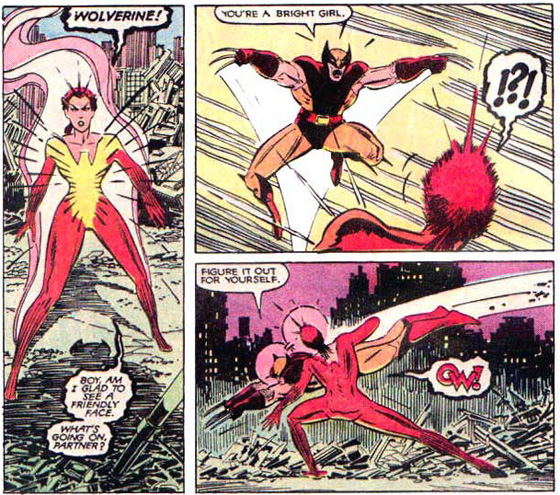
This collection seems to focus on telepath Rachel Summers: in an alternate future where robotic Sentinels dominated mutants, Rachel Summers was Cyclops and Jean Grey’s daughter. Traumatized by being forced to hunt her fellow mutants as a “hound”, Rachel was later hurled back in time to the present. She became part of the X-Men. However she soon discovered she was not in her own past but in a different timeline: certain details were different, including her mother’s death. In X-Men: Ghosts Rachel claims her mother’s Phoenix power to battle a godlike creature called the Beyonder who threatens to destroy our universe. Trying to make amends for her chequered past, she makes some rash decisions a number of times. Although her actions are meant well, they do not seem to work out for the better. It is up to teammate Wolverine to stop the ever-powerful Rachel from becoming a ruthless killer.
Also, Magneto, for years the nemesis of the X-Men, has become their friend since they learned of his childhood imprisonment in Auschwitz. Magneto decides to reform and when Xavier is mortally wounded, he asks his old friend to look over the X-Men. Magneto may be a good guy now, but being charged with crimes against humanity he still has to stand trial for the international court of justice.
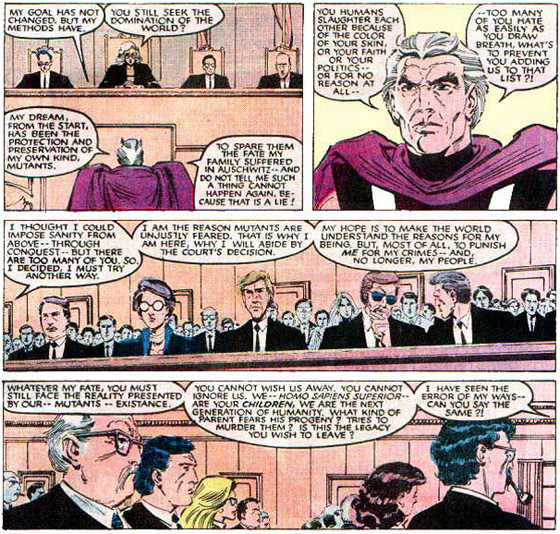
For me it was a real treat to re-read these stories from the nineteen eighties. Chris Claremont’s talented writing and great feel for dialogue turns these characters into living and breathing creatures that really have an impact on an emotional level. As far as superhero stories go, Claremont offers a nice mix between personal development of all the characters and action packed battles.
I loved John Romita Jr.’s early artwork. He is still one of the best artists in the business today. Guest artists are Barry Windsor-Smith, Arthur Adams and Rick Leonardi. This paperback also contains two articles from Marvel Age, the official fanzine published by Marvel Comics at the time, focusing on the history of the X-Men and the art team of John Romita Jr. and inker Dan Green. The only problem I had with this trade is that, after the last page is read, the story is far from over and leaves you hungry for more. But isn’t that what soap opera is all about?
This review was written for and published on the blog of the American Book Center.
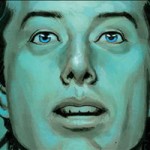
When I was a teenager I found my father’s Beatles record collection in the attic (we’re talking vinyl, by the way). Ever since then, to me The Beatles has been the most important band on earth, ever. To this day, their music resonates within my soul, forming a large and interesting part of the soundtrack of my life. I guess everyone will be familiar with the Fab Four from Liverpool, so no further introduction is needed. Unfortunately, often the same can’t be said about their manager, Brian Epstein, who is far lesser known than John, Paul, George and Ringo.
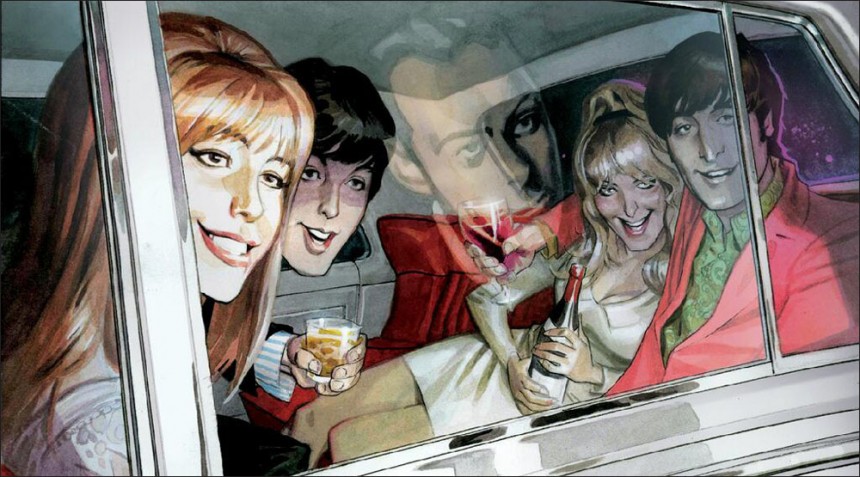
One could fill a library with the large number of books that have been published about the Beatles over the years. In the last couple of years, a couple of comic books about the boys from Liverpool came out and now there is The Fifth Beatle: the Brian Epstein Story to complement the lot. Graphic biographies are quite the trend in comic book land, it seems, and while generally speaking most of them are a bit stale and predictably follow the high and low points of someone’s life, some of them offer a good read. Fortunately, The Fifth Beatle, written by Broadway theatre producer Vivek Tiwary and expertly drawn by Andrew C. Robinson, is one of the latter category.
The book tells the story of the young and talented Brian Epstein who saw the Beatles play in the basement club The Cavern in Liverpool in 1961, when he was twenty-seven years old. Brian was running his family’s music store and had tried his hand at fashion design before that. He decided to manage the Beatles and thanks to Epstein’s perseverance and vision they became an international success. Tiwary tells a very layered tale, not shying away from the dark episodes of Epstein’s life. Epstein was a gay man living in an area in which, according to British law, being gay was illegal. Even though he successfully managed the Beatles and other popular British acts, Brian kept focusing on his mistakes, feeling out of place and lonely, and trying to find a place to belong. He became addicted to drugs. Brian died at age 32, accidentally overdosing on sleeping pills.
The book focuses on Epstein, letting the Beatles play second fiddle, which is fine, because Epstein’s story deserves to be told.
I like the fact that Tiwary uses juxtaposition as a literary device. In a brilliantly executed sequence Epstein is meeting Colonel Tom Parker, Elvis’s manager, for lunch. Parker is depicted as a greedy, ruthless and red-eyed devil who wolfs down his food, while Brian is shown to be a modest, well-mannered gentleman who hardly touches the grapefruit he ordered.
Robinson uses a very lively style that sits between caricature and realism, which works well with Tiwary’s tone of voice, which is serious and witty at the same time.
Cartoonist Kyle Baker got to draw some of the more unfortunate episodes in the history of the Beatles, like their troublesome tour in the Philippines and the backlash from John Lennon’s infamous ‘We’re bigger than Jesus!’ comment. Baker uses a cartoon-y drawing style that pays homage to the Beatles cartoon series, and the overall tone of this section of the book is brighter and funnier. In my opinion, since it doesn’t match with the rest of the book stylistically, it could have been left out.
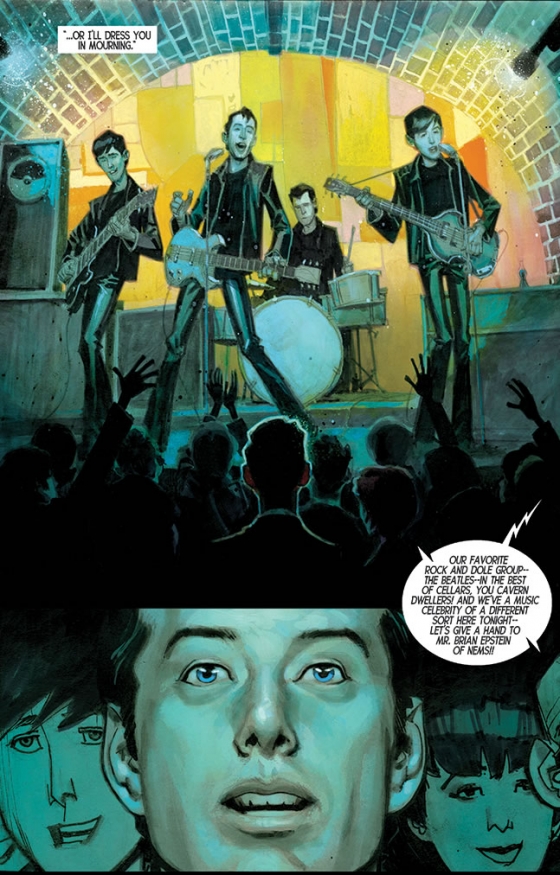
‘As it turns out,’ the writer explains in his afterword, ‘almost everything in the pages you’ve just read actually did happen. But conveying the truth – while important – has never been my primary goal. My goal with The Fifth Beatle is to use 130 pages of my words and Andrew C. Robinson’s gorgeous art to reveal not just the facts but the poetry behind the Brian Epstein Story.’ As far as I am concerned, Tiwary succeeded very well in his intention. The Fifth Beatle is an interesting graphic poem.
This review is published on the blog of the American Book Center.